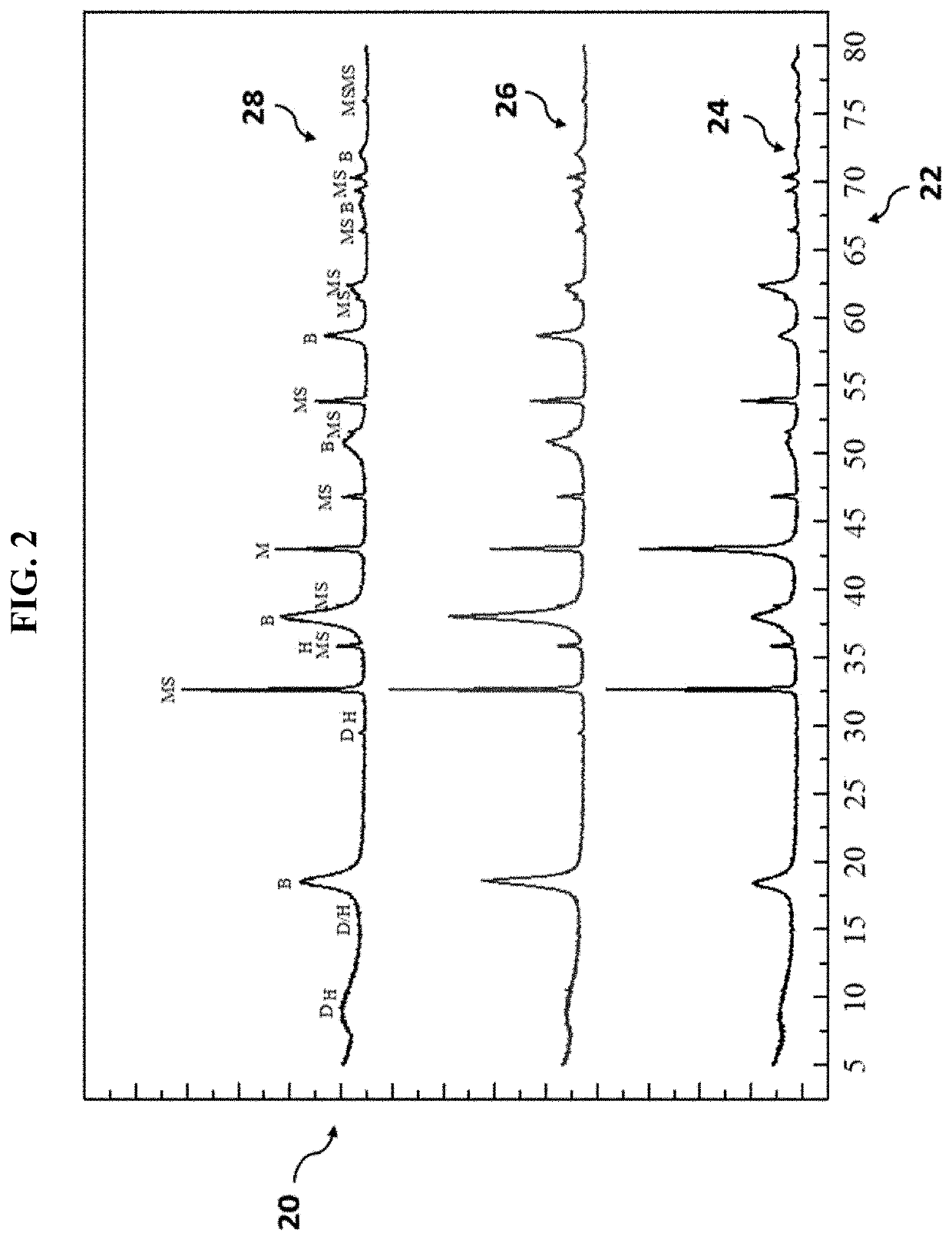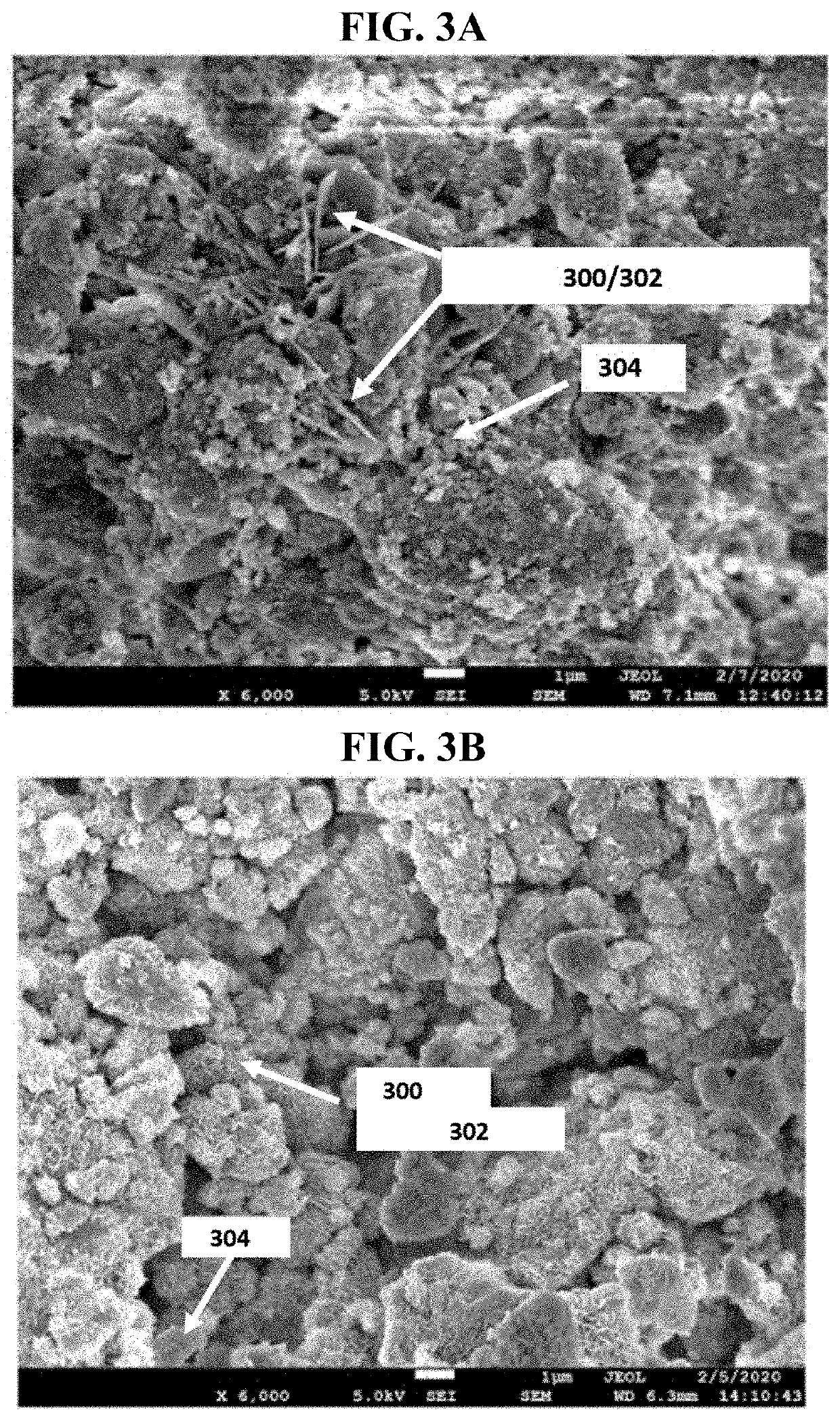Carbonation of reactive magnesia cement (RMC)-based systems
a reactive magnesia cement and carbonation technology, applied in the field of methods, can solve the problems of limiting the overall strength gain of rmc, adverse effects on longer term strength development, and limited carbonation of rmc under ambient conditions
- Summary
- Abstract
- Description
- Claims
- Application Information
AI Technical Summary
Benefits of technology
Problems solved by technology
Method used
Image
Examples
example 1a
scussion of Present Method for Internal Carbonation of RMC-Based Systems
[0144]The present example demonstrates for an environment-friendly method to accelerate the internal carbonation of RMC-based systems. The present method may be referred herein to as a bacteria-based method, and provides two advantages. First, the present method changes the source of CO2 from external to internal. Therefore, limitations associated with the diffusion of CO2 within the sample depth are entirely eliminated. Second, the present method eliminates the need for any special curing environment such as those provided by incubators / carbonation chambers. Without these restrictions, the manufacture of large-scale RMC components and mass production of related products for commercial use becomes a possibility.
[0145]The present bacteria-based method internally provides CO2 for the carbonation of RMC-based systems. Carbonation agents involving CO2-producing bacteria, a CO2 precursor(s) and / or nutrient(s) are inc...
example 1b
al Description and Characterization Results of Present Method
[0150]In order to demonstrate the working principle of the present method and reactive magnesia composite, the preparation of carbonation agents and its application in RMC paste are presented here as an example. In this example, the carbonation agents include Sporosarcina pasteurii, urea and yeast extract (YE), where Sporosarcina pasteurii is one of the ureolytic bacteria and YE serves as the nutrient for the bacteria.
[0151]Sporosarcina pasteurii (DSM33) was purchased from Leibniz Institute DSMZ. The liquid growth medium for the bacteria contained 1 L 0.13 M tris buffer, 20 g yeast extract, and 8.1 g NH4Cl. Before use, all the ingredients were autoclaved separately. The bacteria culture was aerobically incubated at 30° C. on an orbital shaker with rotation speed 200 rpm. After 20-24 hours, the culture obviously turned turbid, indicating the growth of cells. Serial dilutions and spread plate technique were used to carry out...
example 1c
nal Design and Sample Preparation
[0161]The compositional design in the current example is shown in Table 4 below.
TABLE 4RMC compositional designs in the current exampleBacteriaS / NNameRMCWaterUreaYE(CFU / g RMC)1W0.5 (control)10.5———2W0.5-B10.5——1.5 × 1083W0.5-Y10.5—0.015—4W0.5-U510.50.05——5W0.5-U1010.50.10——6W0.5-U1510.50.15——7W0.5-U5-Y-B10.50.050.0151.5 × 1088W0.45-U10-Y-B10.450.100.0151.5 × 1089W0.43-U15-Y-B10.430.150.0151.5 × 108
[0162]To study the influences of carbonation agent on the fresh properties of RMC paste, individual component (i.e. bacteria, YE, urea) or their combination was added into the RMC paste (samples 1-7). To reveal the effects of bacteria-based carbonation agent on the hardened properties of the resulting bio-RMC pastes, samples 7-9 were prepared together with the control (sample 1). The name code for each sample strictly follows their compositional design. In the code, the number behinds W denotes the water-to-RMC ratio, the number behinds U denotes the weight...
PUM
| Property | Measurement | Unit |
|---|---|---|
| Temperature | aaaaa | aaaaa |
| Temperature | aaaaa | aaaaa |
| Time | aaaaa | aaaaa |
Abstract
Description
Claims
Application Information
 Login to View More
Login to View More - R&D
- Intellectual Property
- Life Sciences
- Materials
- Tech Scout
- Unparalleled Data Quality
- Higher Quality Content
- 60% Fewer Hallucinations
Browse by: Latest US Patents, China's latest patents, Technical Efficacy Thesaurus, Application Domain, Technology Topic, Popular Technical Reports.
© 2025 PatSnap. All rights reserved.Legal|Privacy policy|Modern Slavery Act Transparency Statement|Sitemap|About US| Contact US: help@patsnap.com



